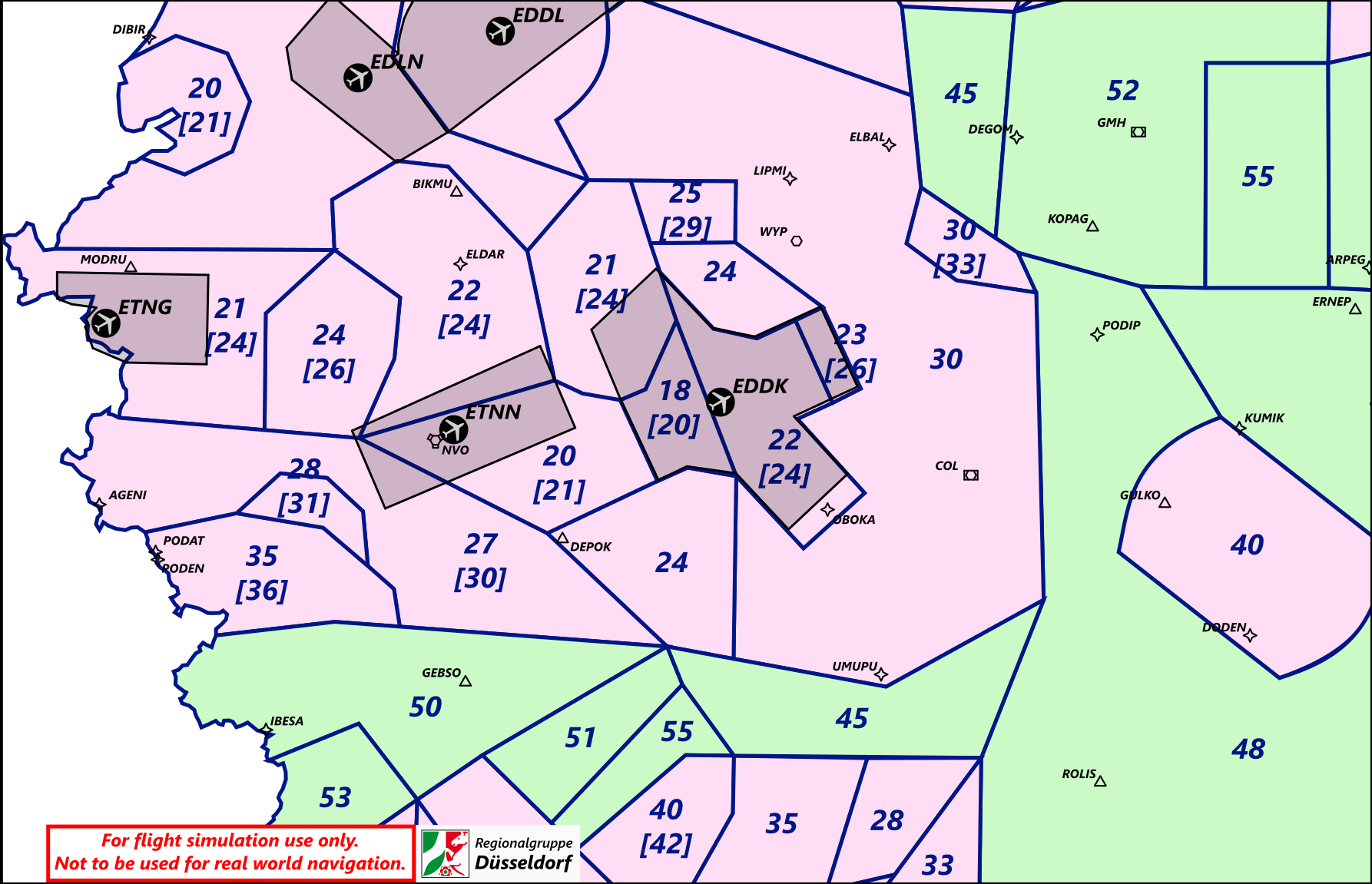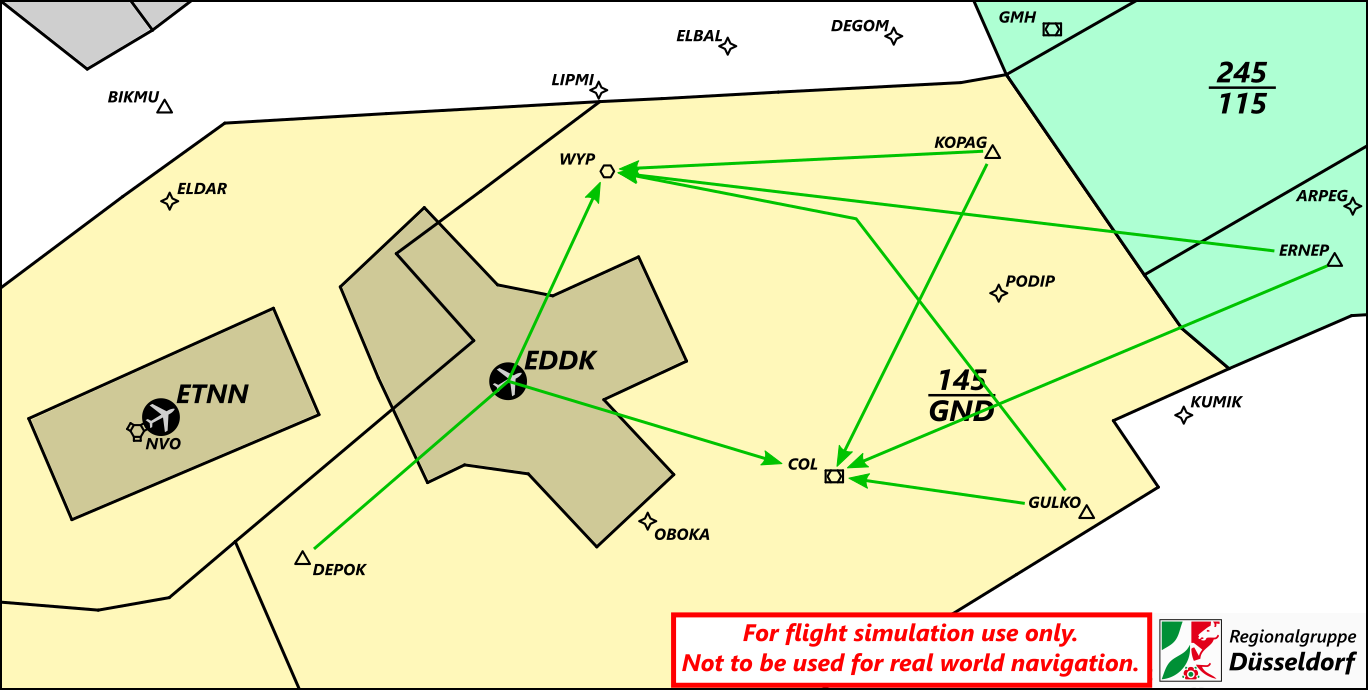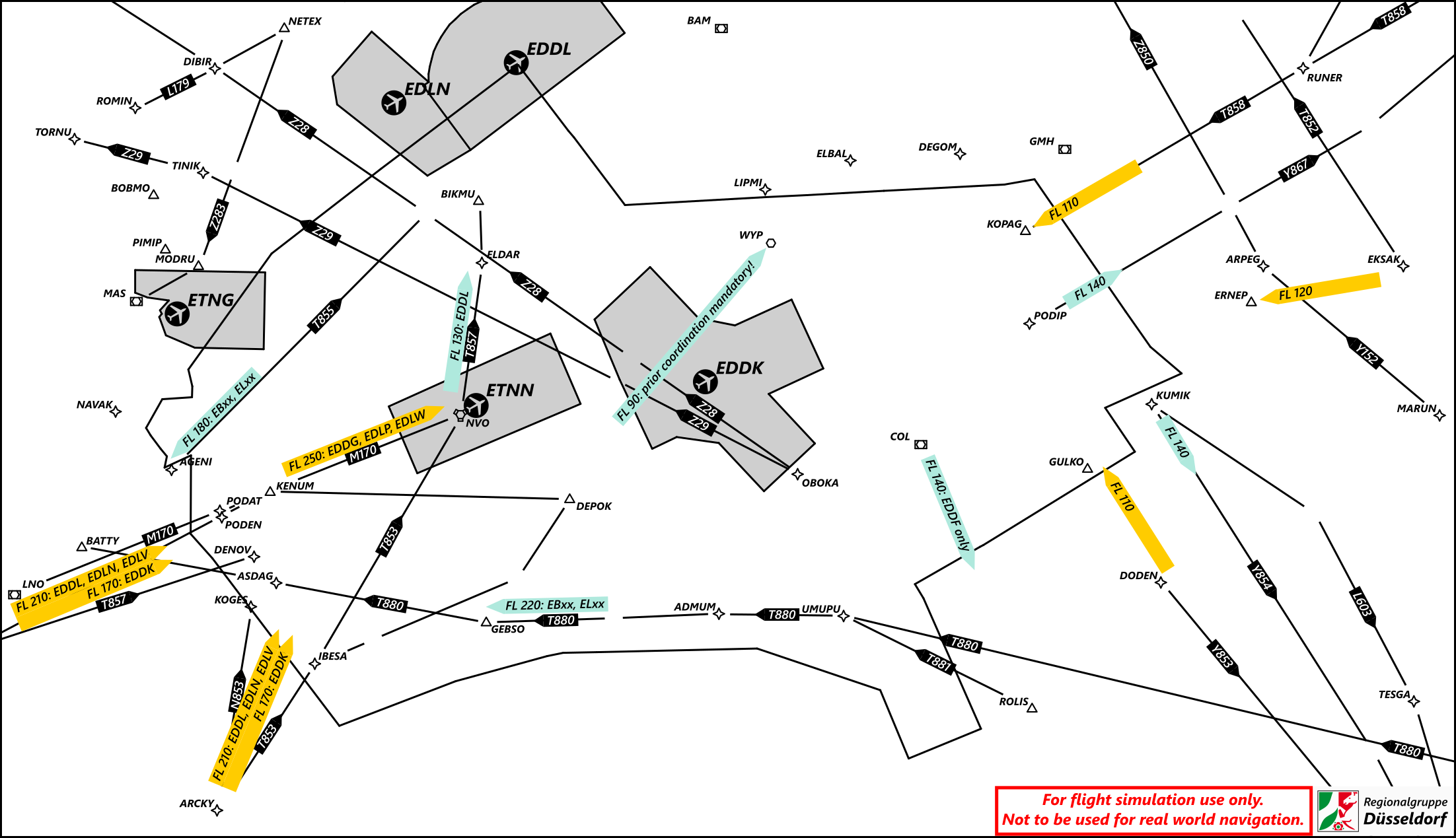Arrival
The area around Cologne is divided into several sectors and areas, which can be staffed by four ATC stations. All radar stations, with the exception of Nörvenich Radar, take over the tasks of the other stations if they are not online.
Arrival: Cologne Arrival DKA is responsible for the area around Cologne/Bonn Airport up to the Belgian border. The sector handles all departures from Cologne and presequence the inbound flights for the feeder. If arrivals or departures from Nörvenich (ETNN) take place without another station being staffed, this traffic is also handled by Arrival.
Feeder: The Feeder (Director) DKF works within the sector of Arrival. Especially during 14 operations the small area between FAF and the Düsseldorf Arrival sector border might require closer coordination between DKA and DKF.
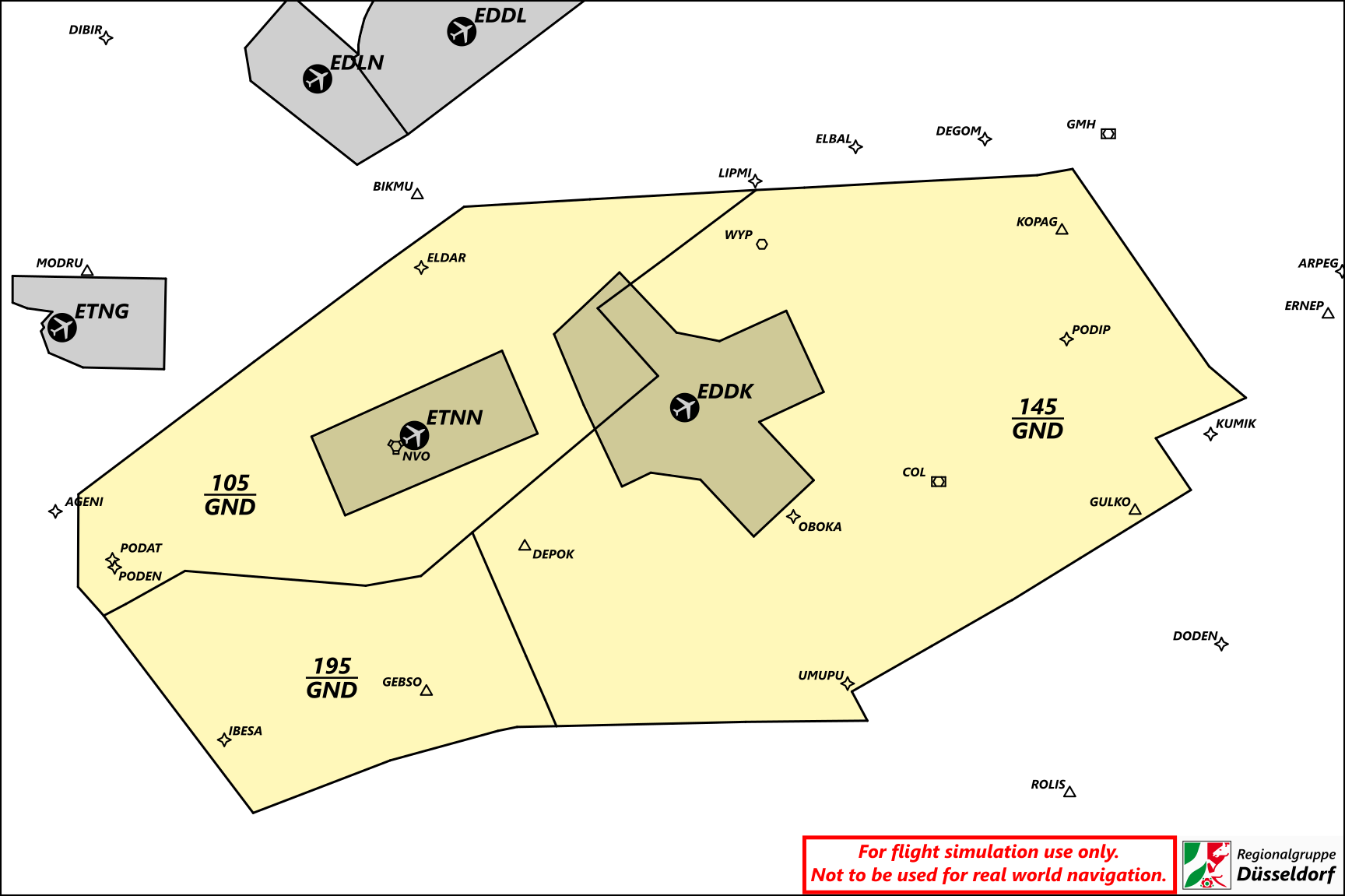 |
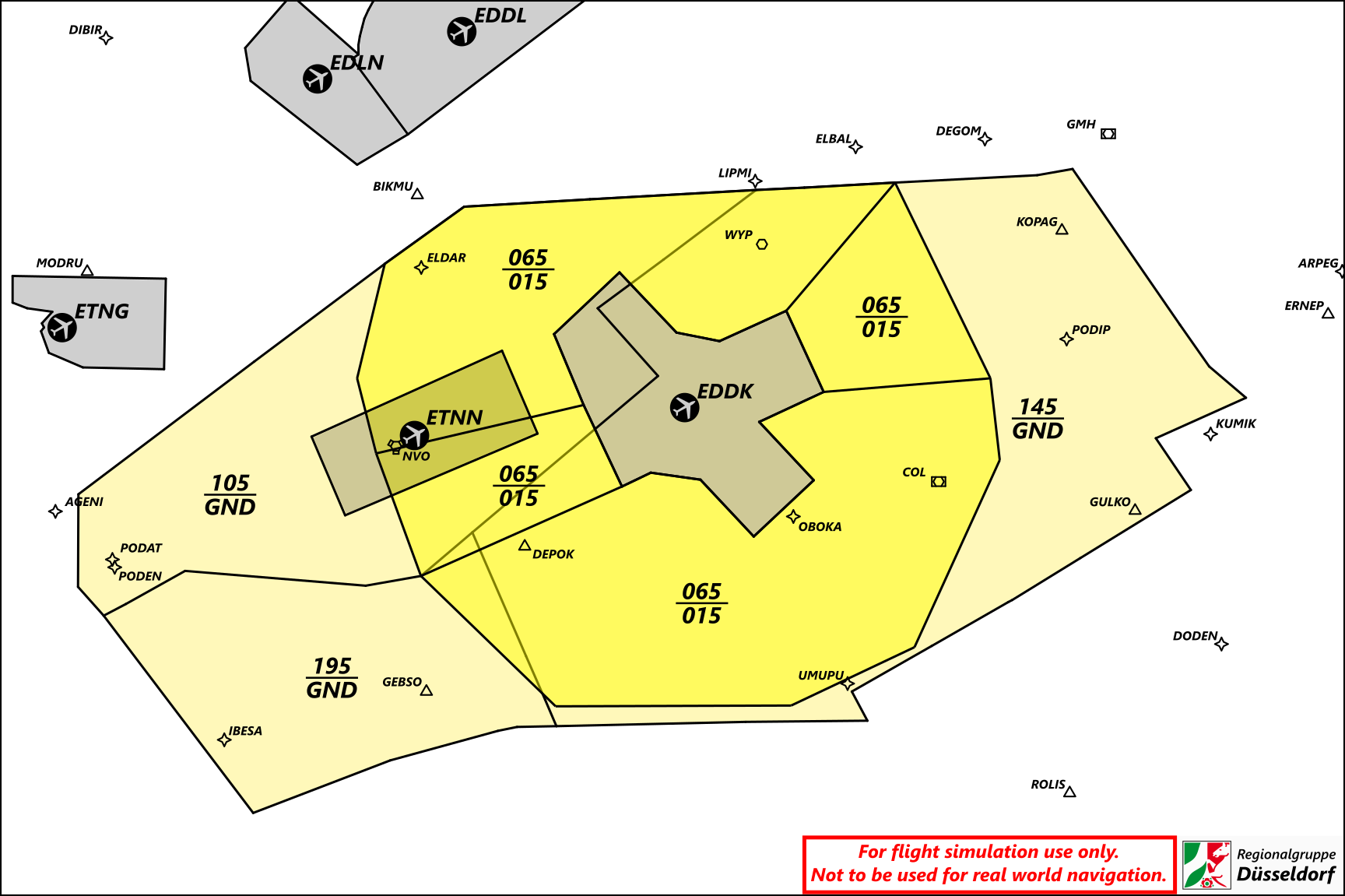 |
| Area of Responsibility Arrival |
"Area of Responsibility" Feeder (dark yellow) |
Military station Nörvenich Radar: For arrivals and departures to the military airbase Nörvenich ETNN, the station Nörvenich Radar (ETNN_APP) can be staffed. This station does not have its own sector as such, but is delegated an area of its sector by the arrival. This is staggered from GND over 3500ft to 5000ft MSL. The exact range can be seen in the following diagram. Coordination between all stations involved is essential.
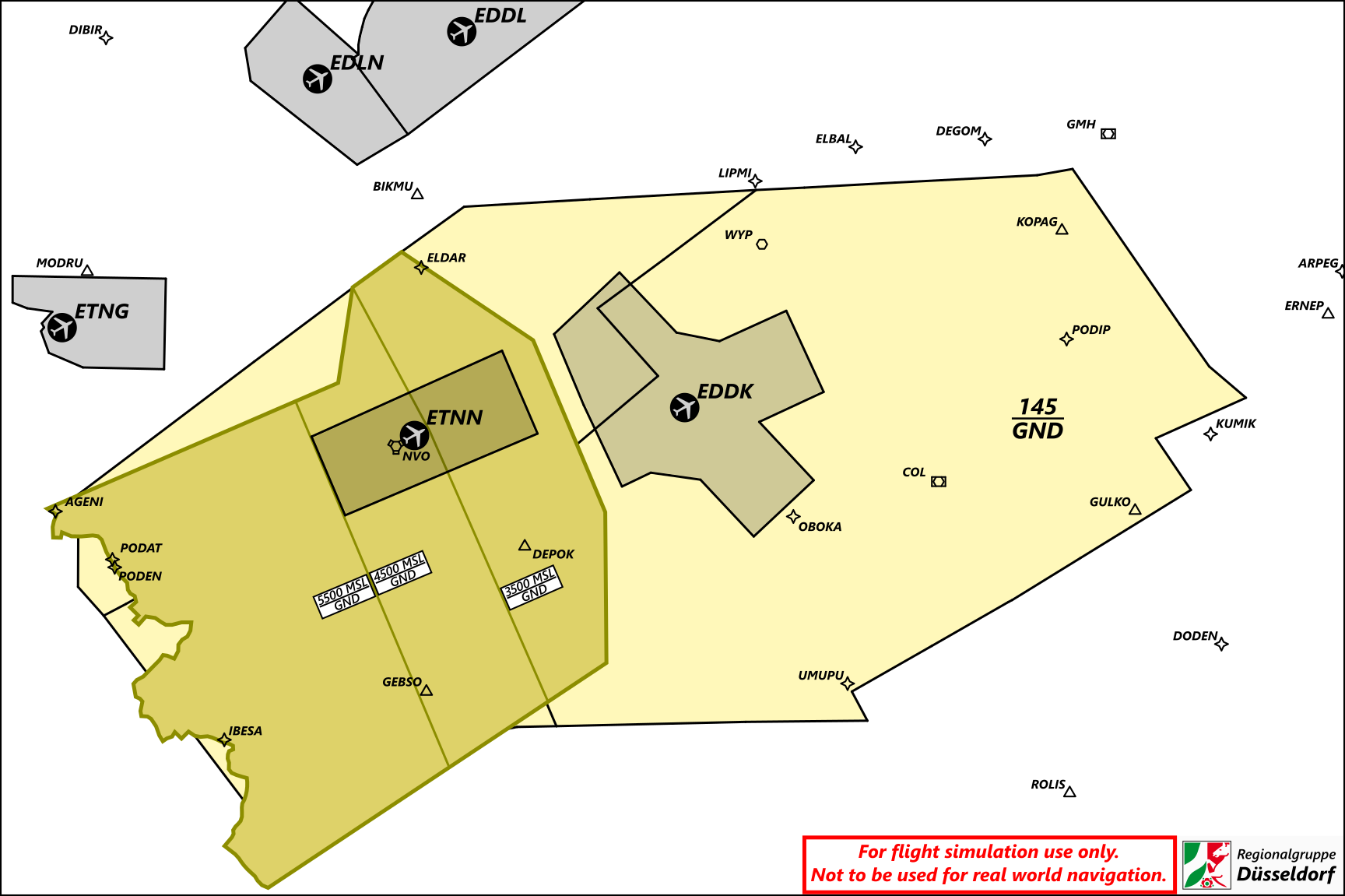 Delegated sector to Nörvenich Radar
Delegated sector to Nörvenich Radar
Langen Radar Sector Nörvenich: Langen Sector Nörvenich NOR is located west of the airport above the arrival area and is primarily responsible for the pre-sequencing of inbound flights to Düsseldorf from IBESA via ELDAR and BIKMU as well as inbound flights to Cologne via DEPOK. Likewise, all Cologne outbounds fly through the sector via NVO in the direction of Belgium.
Outbound flights to Frankfurt via DITAM - OBOKA also pass through the sector, as do inbound flights to Brussels via UMUPU - GEBSO.
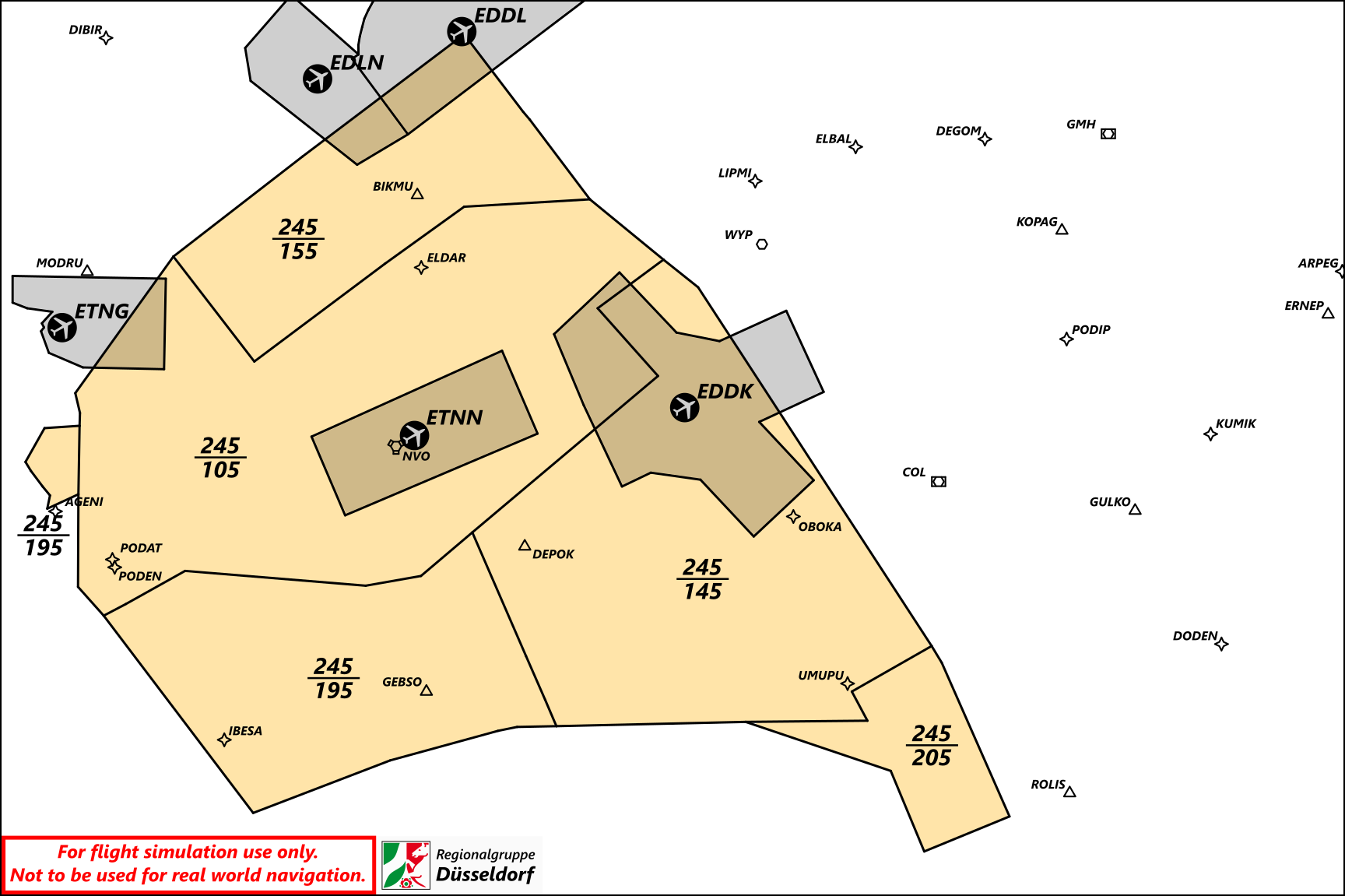 |
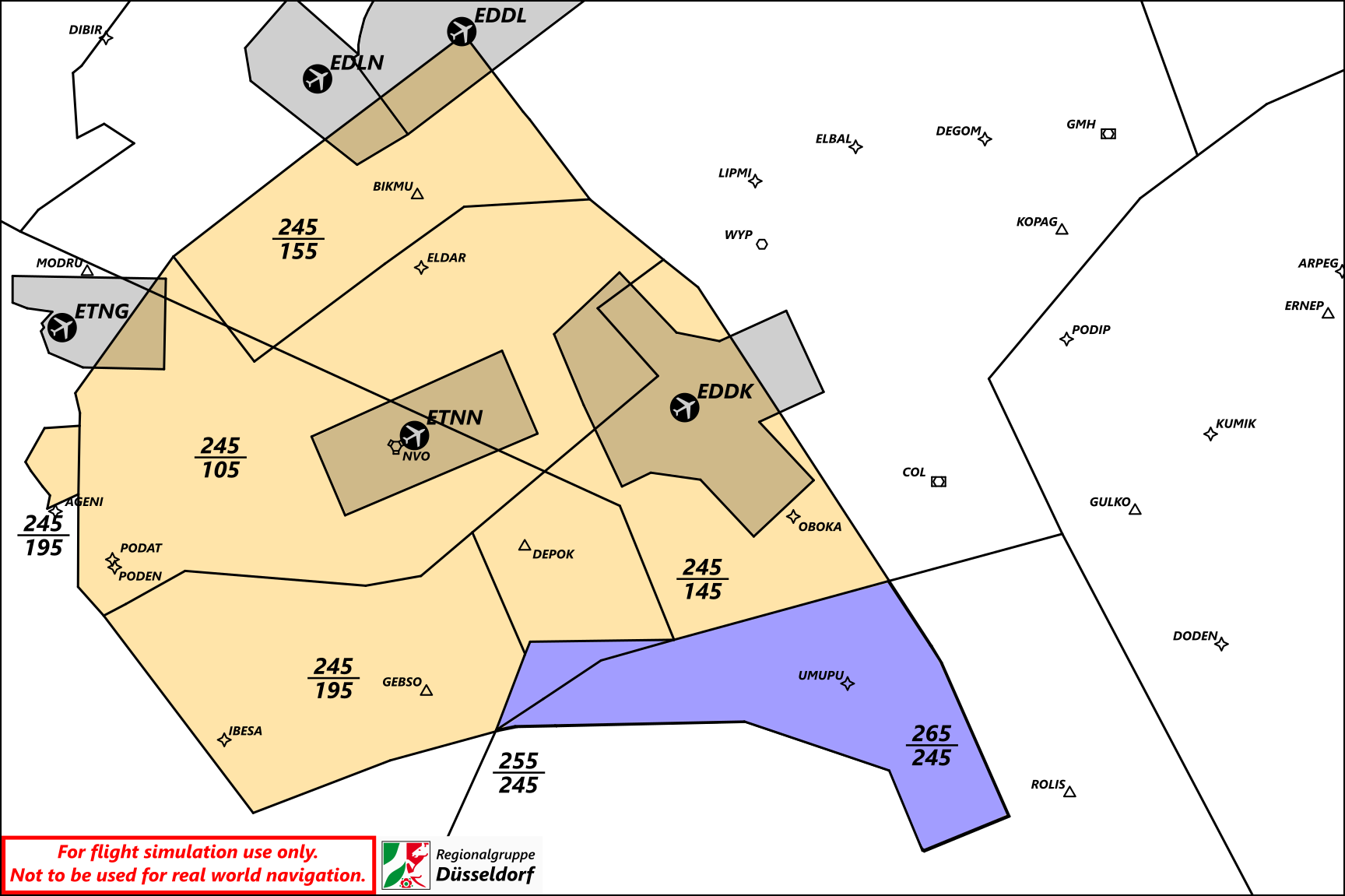 |
| Area of Responsibility Sector Nörvenich |
Area of Responsibility Sector Nörvenich |
Airspace Structure
One of the most complex airspace structures in Germany is located around Cologne and Düsseldorf airports, because several airports are located next to each other in a very small area.
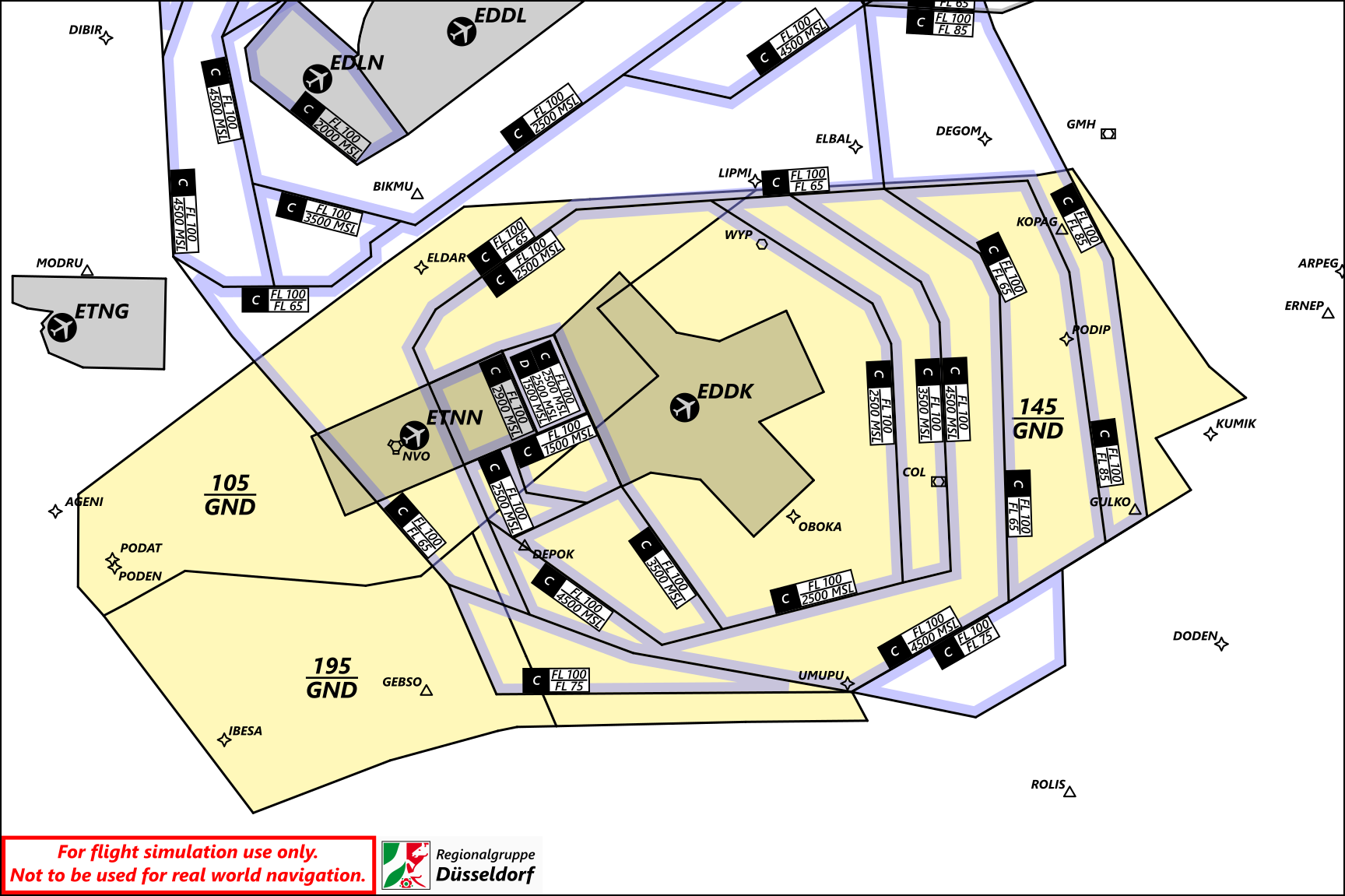 Luftraumstruktur um den Flughafen Köln/Bonn und Nörvenich
Luftraumstruktur um den Flughafen Köln/Bonn und Nörvenich
Aircraft in C/D airspace around Cologne are the responsibility of Cologne Arrival. Airspace crossings through the active approach sector are to be coordinated with the Feeder depending on the situation.
Minimum Vectoring Altitude (MVA)
The MVA around Cologne-Bonn Airport is shown in the following map:
Altitudes are in 100ft (20 = 2000ft). Figures in brackets are corrected for winter (NOV-MAR) for cold temperatures.
Standard Arrivals
The standard arrival routes for Cologne-Bonn start at five waypoints: KOPAG, ERNEP, GULKO in the east and DEPOK and NVO in the west.
For approaches via NVO (Nörvenich), this VOR is also the IAF from which various final approaches lead to the runways.
STARs for Runways 06 and 32L/R are routed from KOPAG, ERNEP and GULKO to COL (Cola). When operating Runways 14L/R and 24, the routes lead to WYP (Wyper).
Transfer heights Inbounds: The following heights are set as standard for the various waypoints. The inbounds are already cleared by the centre for the corresponding arrival.
| Wegpunkt |
Level |
| NVO | FL100 |
| DEPOK | |
| ERNEP | |
| KOPAG | |
| GULKO | FL110 |
All inbounds except via KOPAG are full released on handoff. Inbounds for runway 24 should be handed over from PADH to PADL at FL120 for further descend down to FL80 after coordination initiated by DKA.
Transitions: RNAV transitions to the final approach are published for all runways. Their use depends on the current traffic situation and should be flexible accordingly. In heavy traffic, however, they offer advantages over the normal STARs due to their course.
S-Transitions: An exception are the transitions with Designator S to Runway 14L. These extend deep into the approach airspace of Dusseldorf and are only used in real terms at night on the instruction of the controller. On VATSIM, these transitions should only be used in close coordination with the controller responsible for Düsseldorf in order to avoid conflicts with approaches and departures from Düsseldorf.
N-Transitions: The transitions with Designator N to runway 32R reaches with the base part into the sector Taunus TAU, which is usually served by Kitzingen KTG or Gießen GIN. The transition is also only used at night in real terms and its use on VATSIM should be coordinated with the controller responsible for TAU.
Potential Conflicts
Due to its size and the close proximity of approach and departure routes, the Cologne Arrival sector in the east of Cologne/Bonn has the greatest potential for conflict. Especially between the points KOPAG and COL near PODIP, several routes cross, so that special attention must be paid to the altitude separation there.
In the west, when using the STARs from DEPOK, care must be taken that they intersect with the departure routes to NVO between DEPOK and the airport. However, this point of conflict can be easily avoided by guiding approaching traffic early with vectors in the direction of the active runway and allowing departing traffic to fly out the SIDs.
Quicksheet
The quicksheet provides an overview of the transfers to and from the Cologne sectors.
It only shows the most frequently used transfers. All transfers to neighbouring sectors can be found in the corresponding LoA.

